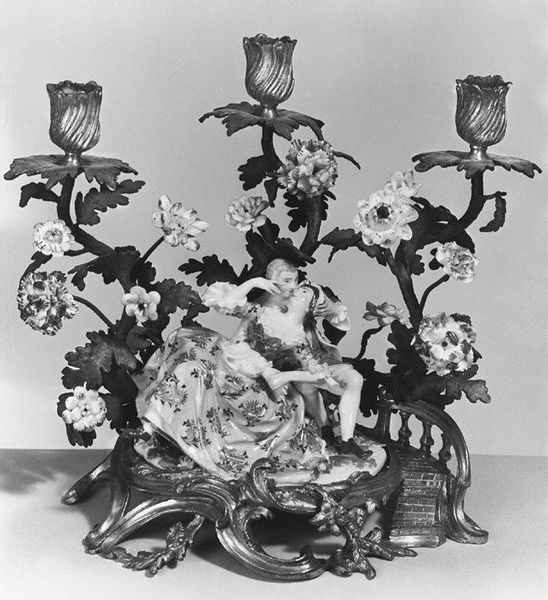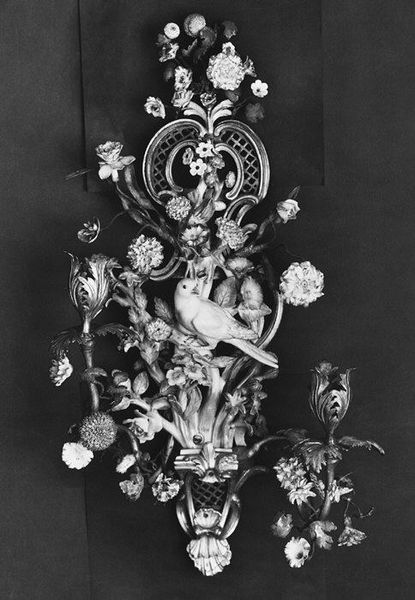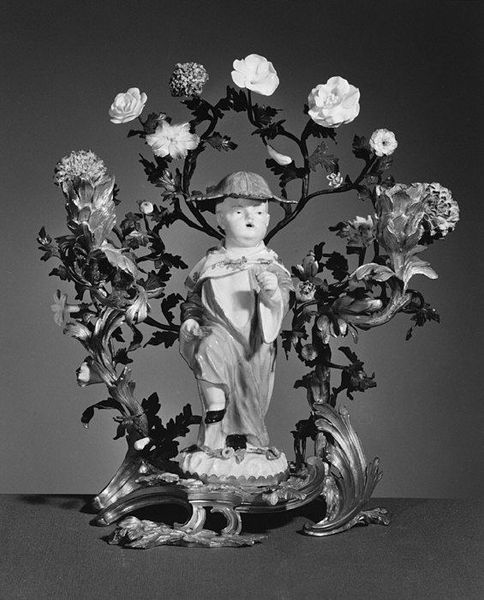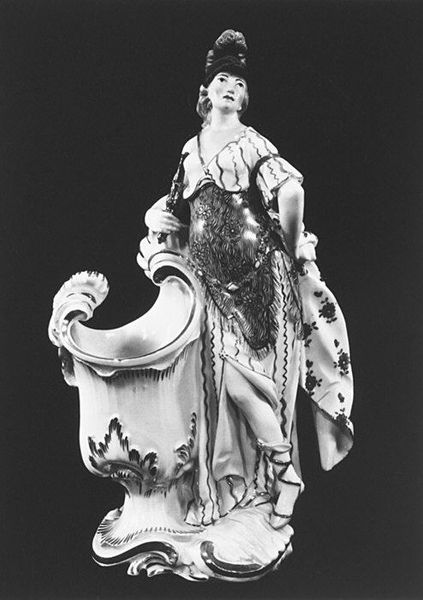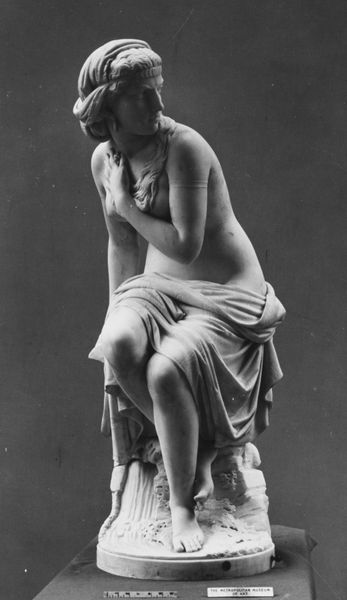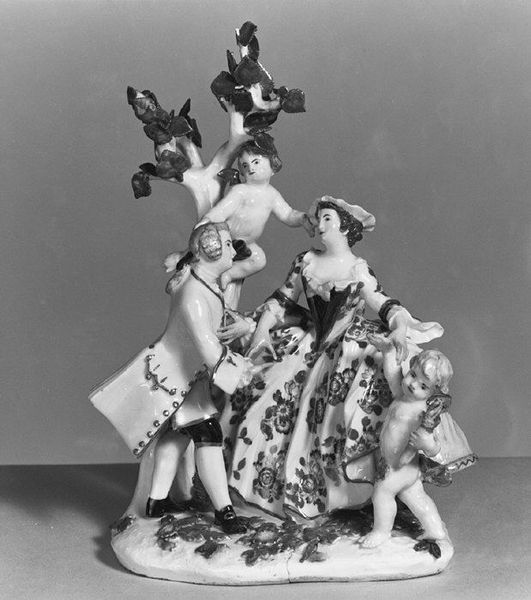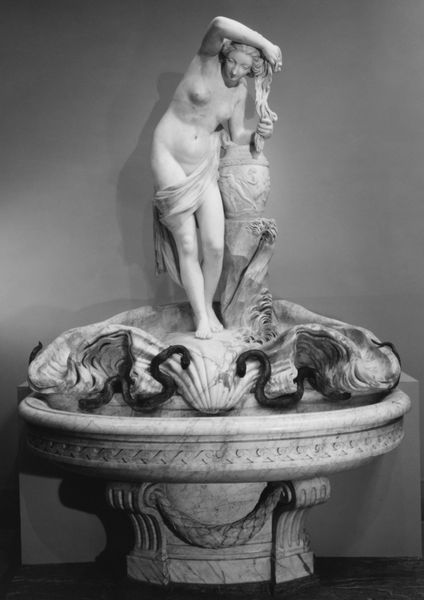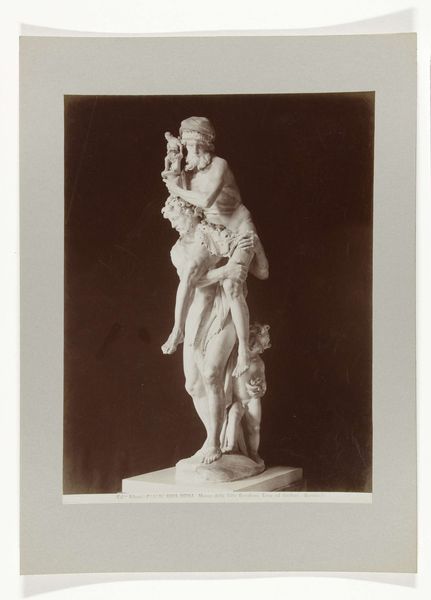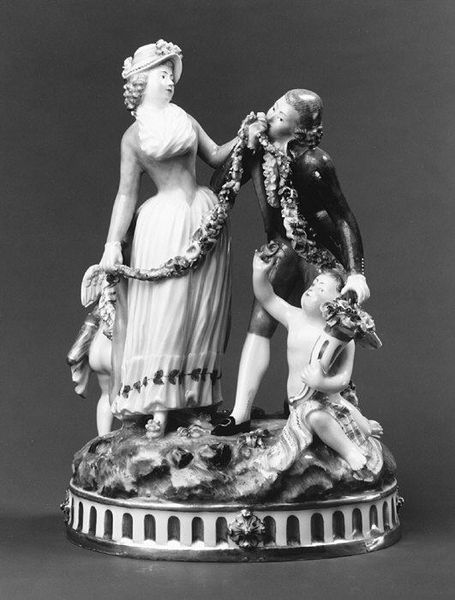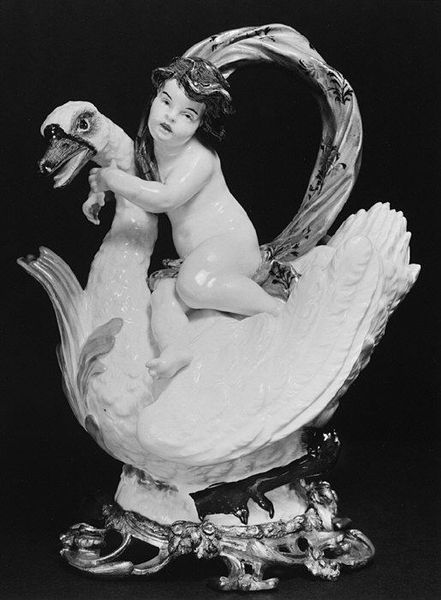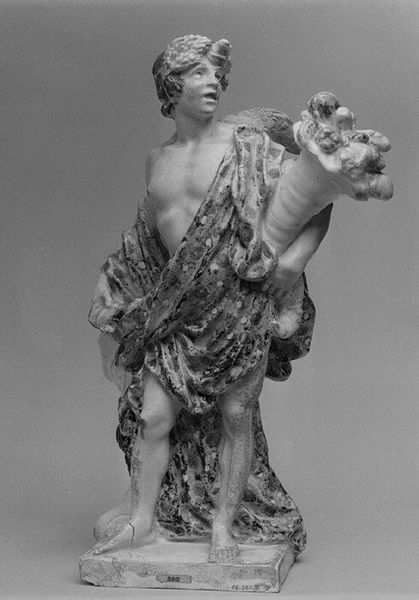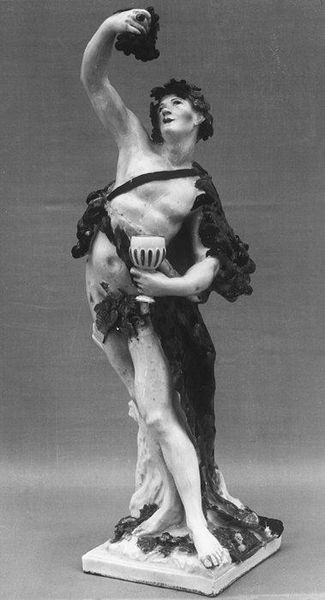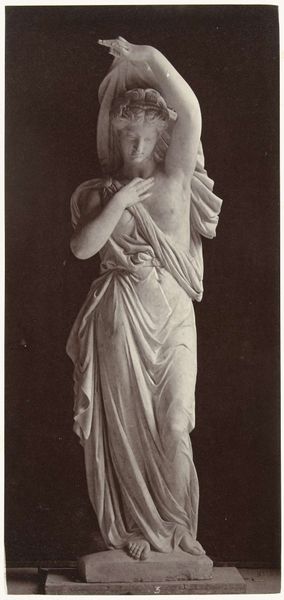
ceramic, porcelain, sculpture
#
sculpture
#
ceramic
#
flower
#
porcelain
#
figuration
#
sculpture
#
black and white
#
decorative-art
#
rococo
Dimensions: Height: 15 1/2 in. (39.4 cm)
Copyright: Public Domain
Editor: This striking ceramic candelabra, "Spring," was crafted by Meissen Manufactory around 1745. There's such a whimsical and theatrical air about it; what first catches your eye? Curator: The clustering of symbols really jumps out. Can you sense how the figures and floral elements entwine? Spring, embodied as both the mature female figure and the child, represents a renewal, not just of the season, but also of hope and prosperity. How does the child's posture carrying a basket speak to you? Editor: He looks almost overburdened, perhaps representing the labor or effort needed to bring about springtime abundance. Curator: Precisely. The Rococo period reveled in ornate displays. Notice how the flowers aren't merely decorative; they're a symbolic language. Porcelain, fragile yet enduring when properly fired, mirrors this concept, what about the flower varieties in this example, and their symbolism to 18th-century viewers? Editor: I don’t know specifically but roses probably imply love, and others likely relate to springtime renewal, perhaps prosperity. What is the psychological power of this kind of symbolic imagery? Curator: They trigger layers of cultural memory, linking us to the past and providing a narrative richness beyond the immediate visual pleasure. They suggest a story, an ideal to strive towards, and a sense of belonging. The combination speaks of heritage, value, and promise. Editor: That’s amazing; I never considered that the candelabra held so much layered symbolism. The Rococo style now makes so much more sense with the way symbols carry meaning! Curator: Indeed! Exploring art this way allows us to uncover deep-seated cultural values through visual storytelling, and helps bridge the present with the past.
Comments
No comments
Be the first to comment and join the conversation on the ultimate creative platform.

